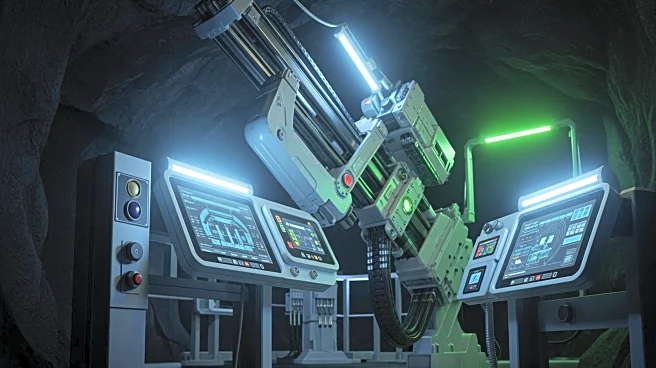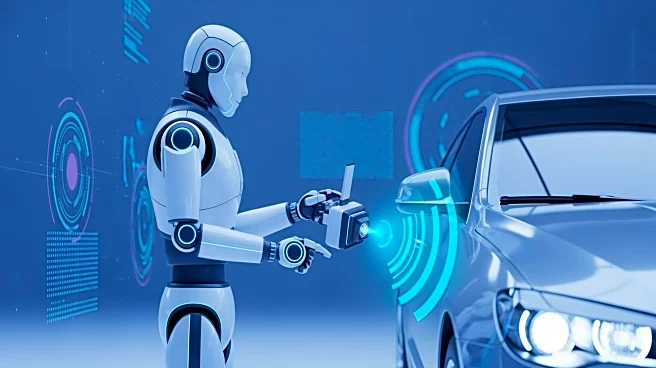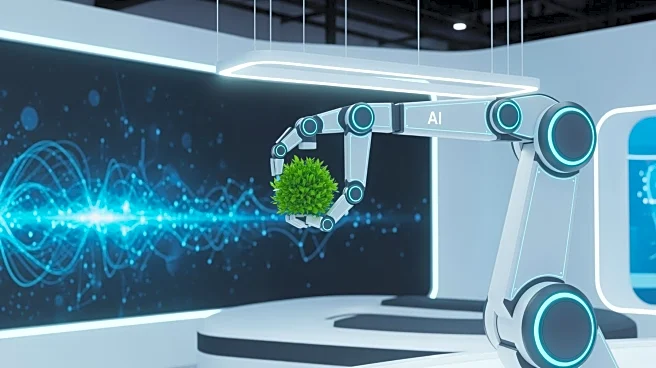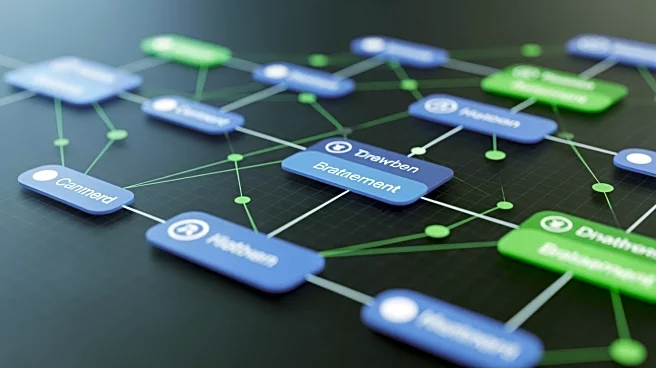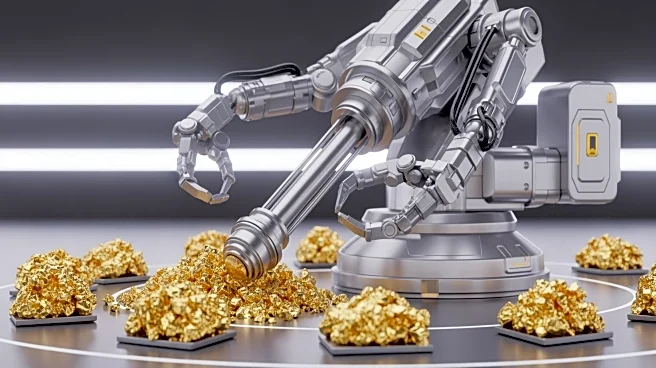What's Happening?
The mining industry is undergoing a significant transformation through digitalization, integrating advanced technologies such as AI, IoT, and automation into daily operations. This shift is driven by the
need to reduce costs, improve safety, and meet environmental, social, and governance (ESG) targets. Mines are moving from isolated pilot projects to fully connected systems that span the entire value chain. Digital mining involves using connected sensors, data analytics, and robotics to monitor and optimize equipment performance and environmental conditions in real-time. Examples include IoT sensor networks, predictive maintenance, AI-assisted decision systems, and autonomous drilling fleets. The adoption of digital mining technologies is expected to grow, with the market projected to reach USD 37.53 billion by 2025 and USD 62.28 billion by 2032.
Why It's Important?
The digitalization of mining operations is crucial for enhancing efficiency, safety, and sustainability in the industry. By leveraging technologies like AI and IoT, mining companies can reduce downtime, optimize energy usage, and improve safety by removing workers from hazardous zones. Real-time monitoring and predictive maintenance can prevent equipment failures, leading to cost savings and increased productivity. Additionally, digital tools enable accurate ESG reporting, which is increasingly important for regulatory compliance and investor relations. As the industry faces labor shortages and pressure to reduce environmental impact, digitalization offers solutions to these challenges, potentially leading to a more sustainable and competitive mining sector.
What's Next?
The future of digital mining will likely involve further integration of autonomous and connected systems, with more remote operations centers managing entire sites from a single interface. The focus will be on creating 'green' digital mines that use AI and digital twins to monitor emissions and water usage. As technology advances, mines will increasingly resemble living networks that can sense, predict, and adapt in real-time. The challenge will be to trust and act on the data collected, ensuring that digital strategies are integrated company-wide to maximize value. Companies will compete to offer comprehensive solutions that link planning, operations, and ESG reporting.
Beyond the Headlines
The digital transformation in mining raises ethical and cultural considerations, such as the impact on employment and the need for workforce retraining. As automation reduces the need for manual labor, companies must invest in skills development to ensure workers can adapt to new roles. Additionally, the integration of digital technologies requires robust cybersecurity measures to protect sensitive data and prevent disruptions. The shift towards digital mining also highlights the importance of collaboration between technology providers and mining companies to develop solutions that address industry-specific challenges.
